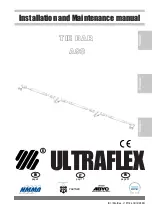
113
4.2
Choosing an analysis method
Quansoft allows the user to assign an analysis method to any stage of the PCR that has
fluorescent readings. The available analysis methods are:
•
None:
When no analysis method has been set, the Results Editor will display the plate
layout and a graph of raw fluorescent data.
•
Baseline correction:
Allows the user to adjust the data for background fluorescence.
•
Quantification:
Determines the amount of starting DNA:
o
Absolute quantification
: Compares the Cqs of unknown samples against those
of known standards plotted against the log of their concentrations on a standard
curve.
o
Relative quantification:
An absolute quantification method; this uses two
reporter dyes and two standard curves to compare the concentration of one DNA
template relative to a second template.
o
Relative quantification cycles:
Cq values for a calibrator can be used for a
relative quantification between the calibrator and all other samples in the
experiment. No standards are required.
•
Dissociation curve:
Measures the temperature at which the DNA strands dissociate (i.e.
the melting temperature or Tm). Since the melting temperature is characteristic of the GC
content, length and sequence of a DNA product, this method is a useful tool in product
identification.
•
Plus-minus scoring:
Determines the presence or absence of a PCR product – input data
can either be kinetic (whereby the number of readings is >1) or end-point (one reading
taken at the end of the run).
•
Allelic discrimination:
Detects single nucleotide differences – the most common assay to
use is the hydrolysis probe assay using dual-labelled probes for each of the alleles of
interest.
•
Multi-read:
Combines all the readings from a well and takes an average – useful in end-
point analysis.
The table below provides a point summary of the valid analysis methods in terms of the number of
cycles and the number of reads within a program.
Number of cycles
in the stage
Number of reads
in the stage
Valid analysis methods
One
One
Multi-read
Plus-minus (without baseline correction or analysis
method options)
Two or more
One
Baseline
Quantification (without relative quantification options)
Multi-read
Plus/minus (all options)
Ramp read
One
Dissociation curve
One
Two or more
Multi-read
Plus-minus (without baseline correction or analysis
method options)
















































